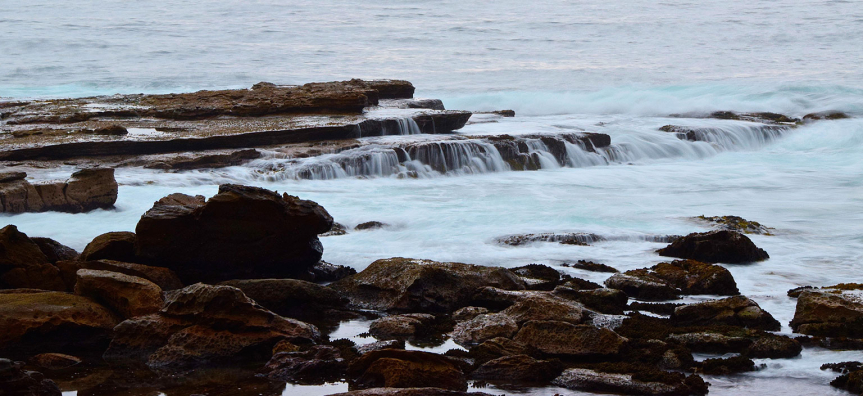
When the tide retreats a secret world of marine ecosystems opens up with clusters of mini aquariums, seething with tiny creatures. Explore the flat, expansive, eroded regions at the bottom of our rocky headlands. You’ll find they’re home to a huge variety of plants, animals and invertebrates such as starfish, crabs and shellfish. Rock platforms are the most accessible marine habitats and there’re so many to discover on our Northern Beaches.
Human Impact
Everyone loves discovering rock pools. But collecting organisms, overturning boulders and trampling habitats destroys the delicate balance of these fragile ecosystems. We’ve actively responded to these negative human impacts by installing interpretive signs at several locations to build public awareness. Council rangers also patrol protected rock pools to safeguard against further damage.
Environmental Awareness Opportunities
Educational rock platform walks and events held by Coastal Ambassadors help to raise awareness of the importance of conserving rock platform habitats. Our Coastal Environment Centre and Manly Environment Centre is a great place to visit to learn more about our intertidal rocky shores.
Intertidal Protected Areas (IPA)
IPAs safeguard selected rocky shore habitats and their resident intertidal invertebrates. On the Northern Beaches, Bungan Head and Mona Vale and Dee Why Headlands are classified as IPA's. Many of the marine invertebrates found on the rock platforms represent unique or endemic temperate Australian species.
Aquatic Reserves
Aquatic Reserves are permanent marine sanctuaries established to protect biodiversity and representative samples of our marine life and habitats. The large rock platforms at Barrenjoey, Long Reef and Narrabeen Headlands are all classified as Aquatic Reserves, as well as Cabbage Tree Bay and North Harbour.
Report illegal foraging confidentially to the Fishers Watch Phoneline on 1800 043 536 or the Sydney Fisheries Office (North District) on 02 8437 4903 or use their online report form.
